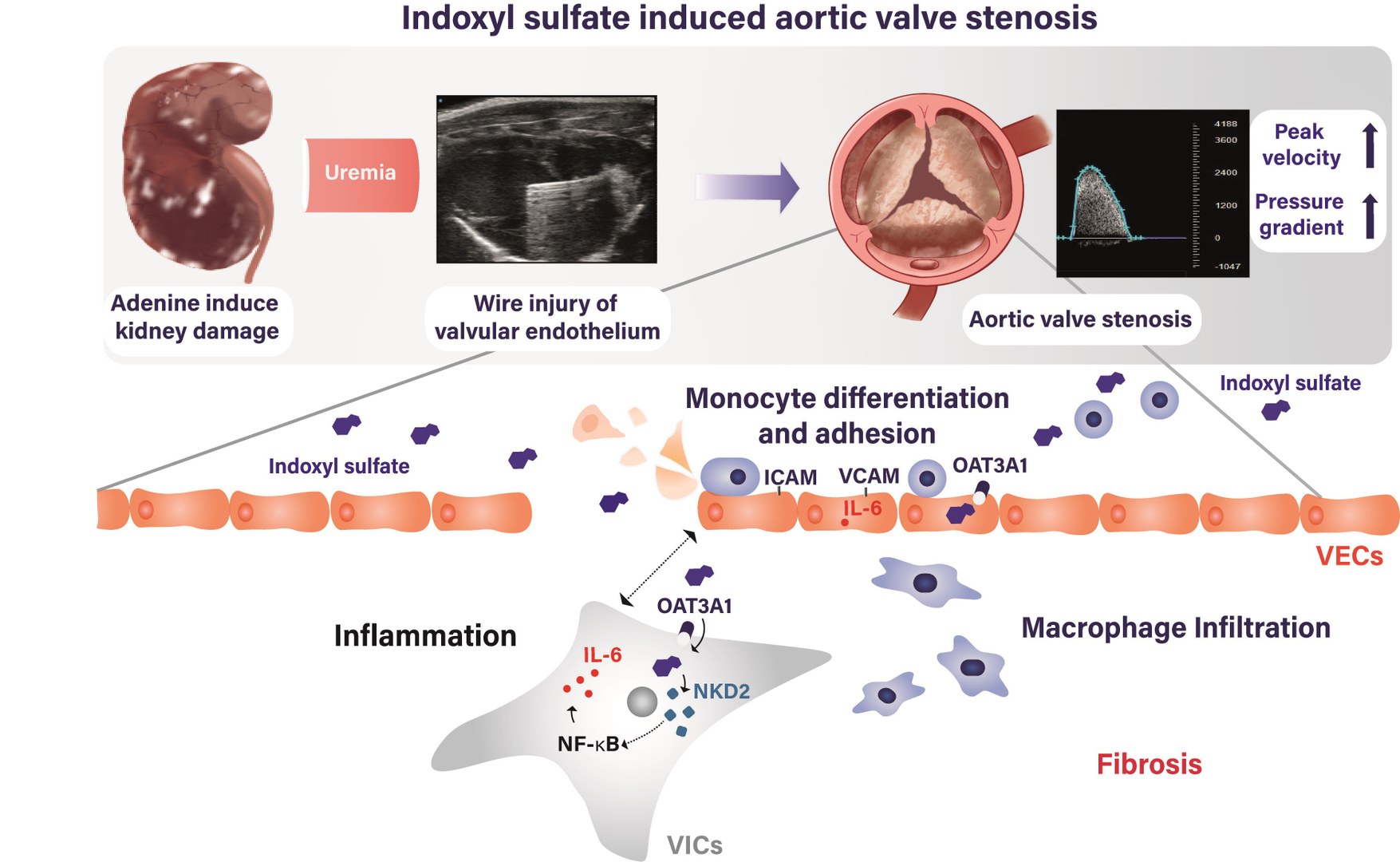Title of the Study
"The role of uremic toxin indoxyl sulfate in the pathophysiology of aortic valve stenosis"
Published on June 17, 2025
https://academic.oup.com/cardiovascres/advance-article/doi/10.1093/cvr/cvaf106/8164527?login=true
Authors
Philip Düsing, Isabel Göbel, Ansgar Ackerschott, Laurine Reese, Patrick Giavalisco, Frederik Dethloff, Sven Thomas Niepmann, Marta Stei, Thomas Beiert, Sebastian Zimmer, Christian Kurts, Georg Nickenig, Felix Jansen, Andreas Zietzer
What is it about?
This study provides new insights into how the uremic toxin indoxyl sulfate (IS), which accumulates in the blood during chronic kidney disease, contributes to the development of aortic valve stenosis. The researchers demonstrate that IS promotes inflammation and calcification as well as it impairs valve function - both in vitro and in preclinical mouse models.
Key Findings
Cell culture experiments showed that IS, in combination with phosphate, enhances calcification in human valvular interstitial cells.
The underlying mechanism involves upregulation of NKD2, IS uptake via the OAT3A1 transporter, and activation of NF-κB signaling and IL-6 expression.
In vivo studies confirmed that mice with chronic kidney disease or treated with IS and wire injury-induced aortic stenosis developed worsened valve function, increased fibrosis, macrophage infiltration, and elevated NKD2 expression.
